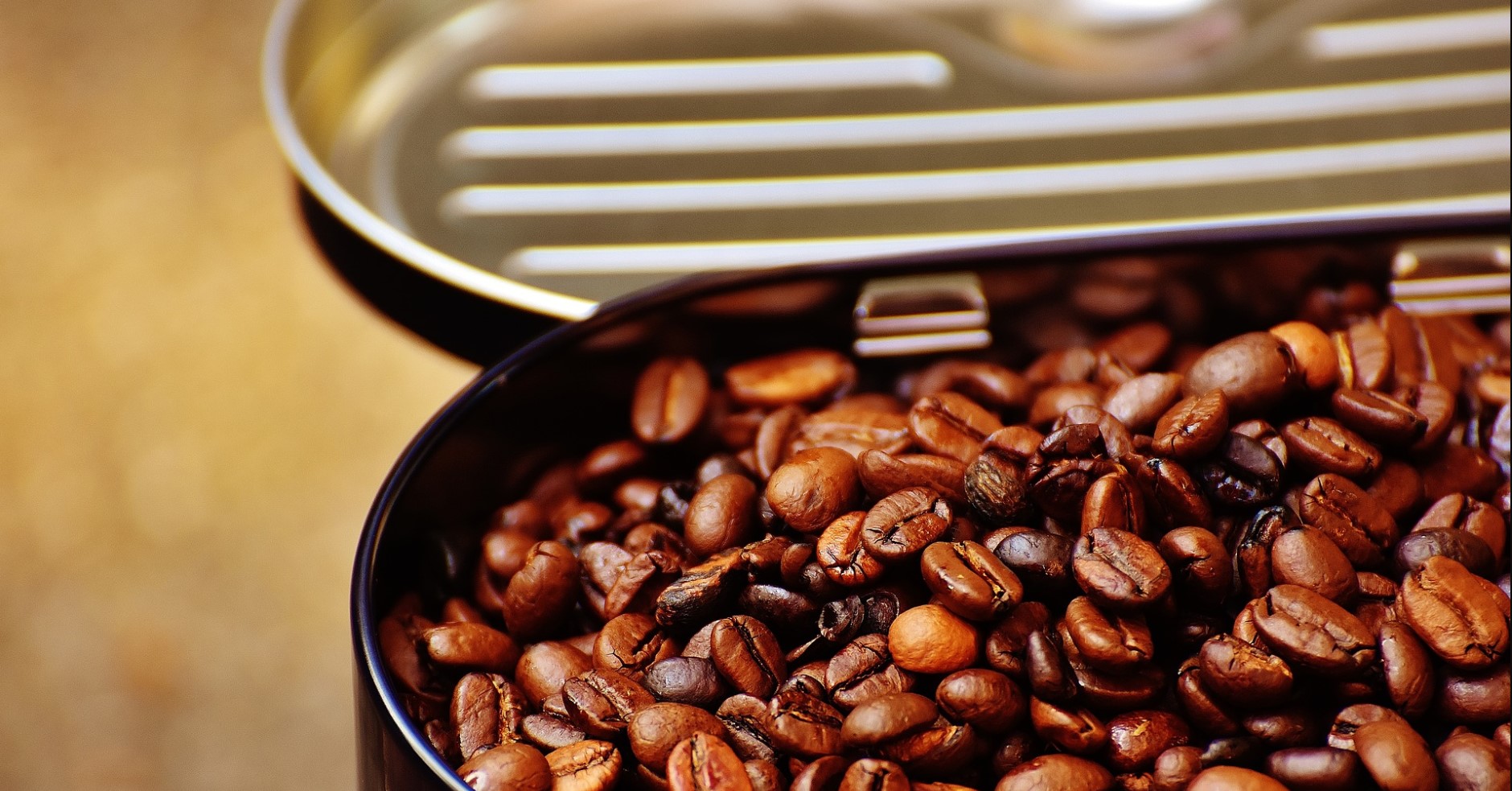
Coffee, the beloved beverage cherished by millions around the world, has an intriguing journey from the coffee plant to the comforting brew in our cups. However, many coffee enthusiasts may not be aware of how coffee beans change over time and the impact storage has on their quality. In this comprehensive guide, we will delve into the realm of Coffee and Aging, exploring the transformative process coffee beans undergo and providing valuable storage tips to preserve their optimal taste and aroma.
Coffee and Aging: The Transformation of Beans
Coffee beans, the seeds of the coffee fruit, undergo a fascinating transformation from their initial state on the coffee plant to the roasted and ground form we brew into our favorite cup of joe. Understanding this process is essential in appreciating the complexities of coffee flavor profiles.
In this section, we will explore the journey of coffee beans through their various stages of transformation:
- Harvesting at the Peak: Ensuring Quality Beans The process begins with the careful harvesting of coffee cherries when they are at their ripest. Hand-picked or machine-harvested, only the finest and fully matured cherries are selected to ensure the beans have developed the desired characteristics that contribute to their distinct taste and aroma.
- The Drying Process: Balancing Moisture Levels After harvesting, the coffee beans are subjected to the drying process. This critical step involves reducing the moisture content of the beans to prevent mold growth and maintain their stability during storage. Sun-drying and mechanical drying methods are commonly used, each contributing to the unique characteristics of the coffee.
- Roasting: Unlocking Flavor Potential Roasting is the pinnacle of coffee transformation. This process involves applying controlled heat to the green coffee beans, bringing out their distinct flavors and aromas. The duration and temperature of roasting profoundly impact the taste profile, ranging from light and floral to dark and bold.
- The Impact of Roast Levels: From Light to Dark The roast level significantly influences the flavor and aroma of the coffee. Light roasts preserve the delicate and nuanced flavors of the beans, while dark roasts offer a bolder, smoky experience. Each roast level caters to different preferences, making coffee an incredibly versatile beverage.
- The Art of Blending: Harmonizing Flavors Coffee blending is an art form in itself, where different coffee varieties and roast levels are combined to create a balanced and consistent flavor profile. Master blenders skillfully mix beans to achieve the perfect harmony of taste, creating signature blends enjoyed by coffee lovers worldwide.
Understanding the intricacies of these transformation stages allows coffee enthusiasts to appreciate the dedication and expertise that goes into producing the perfect cup of coffee. The next time you enjoy your morning brew, take a moment to savor the journey from coffee plant to aromatic elixir.
Harvesting at the Peak: Ensuring Quality Beans
The quality of coffee begins with the crucial process of harvesting the beans at their peak of ripeness. This fundamental step sets the foundation for a truly excellent cup of coffee. Whether done by hand or using modern machinery, coffee cherries are meticulously selected to ensure only the ripest ones are chosen. This careful selection process ensures that the beans have developed the ideal characteristics that contribute to their distinct taste and aromatic profile.
Hand-picking coffee cherries allows for a more delicate and selective approach. Skilled workers carefully examine each cherry, ensuring they are fully matured and ready for harvest. This method guarantees that only the best beans are collected, which will ultimately result in a richer and more flavorful cup of coffee. On the other hand, machine harvesting can be a more efficient process, particularly on larger coffee plantations. Modern machinery is designed to pick only ripe cherries, leaving unripe ones on the tree for future harvests.
Regardless of the method employed, the ultimate goal is the same: harvesting the coffee beans at the peak of their ripeness. This practice guarantees that the beans possess the desired attributes that lead to a more enjoyable coffee-drinking experience. From the moment the coffee cherries are picked, the journey of coffee and aging begins, setting the stage for the transformation of the beans into the aromatic elixir we all love.
The Drying Process: Balancing Moisture Levels
Once coffee beans are harvested, they undergo a vital stage known as the drying process. During this essential step, the moisture content of the beans is carefully reduced to ensure their quality and longevity. Balancing moisture levels is crucial as it prevents mold growth and preserves the beans’ stability during storage, ensuring that they retain their optimal flavor.
- Sun-Drying Method
- One common method of drying coffee beans is sun-drying. In this traditional approach, freshly harvested coffee cherries are spread out in thin layers under the sun. As the cherries bask in the warm rays, natural evaporation occurs, gradually reducing the moisture content of the beans. Sun-drying not only helps in preserving the beans but also adds a unique touch to their flavor, as they absorb some of the characteristics of the environment they are dried in.
- Mechanical Drying Method
- In modern coffee production, mechanical drying methods have become increasingly popular due to their efficiency. This method involves using specialized drying machines designed to control temperature and air circulation. The machines carefully regulate the drying process, ensuring that the beans are dried evenly and efficiently. Mechanical drying allows for a more consistent and faster drying process, making it a favored choice on larger coffee farms and in regions with unpredictable weather conditions.
- Balancing Moisture for Optimal Results
- Whether coffee beans are sun-dried or mechanically dried, the key is to strike the right balance in moisture levels. Drying the beans too quickly or unevenly can result in an inferior product, while excessive moisture can lead to mold growth and deterioration. Skill and expertise are essential in achieving the perfect moisture content, ensuring that the coffee beans are at their best for roasting and ultimately, brewing a delicious cup of coffee.
Roasting: Unlocking Flavor Potential
Roasting is the pinnacle of coffee transformation. This process involves applying controlled heat to the green coffee beans, bringing out their distinct flavors and aromas. The roasting duration and temperature profoundly impact the taste profile, ranging from light and floral to dark and bold.
The Impact of Roast Levels: From Light to Dark
The roast level of coffee beans plays a crucial role in determining the final flavor and aroma of the brewed coffee. From light to dark, each roast level offers a unique and distinct experience for coffee enthusiasts. Let’s explore the characteristics of different roast levels and how they cater to diverse preferences, making coffee a truly versatile beverage.
Light Roast
Light roasts are characterized by their light brown color and a dry, smooth surface. The beans are roasted for a shorter duration, preserving their original flavors and delicate nuances. As a result, light roasts showcase the natural characteristics of the coffee origin, including the unique terroir and specific processing methods. Coffee brewed from light roast beans offers a bright and crisp taste, with prominent floral and fruity notes. It is the preferred choice for those who enjoy the pure essence of coffee and appreciate its subtle complexities.
Medium Roast
Medium roasts strike a balance between light and dark roasts, both in terms of flavor and appearance. The beans are roasted for a slightly longer period than light roasts, leading to a medium brown color and a slightly oilier surface. This roast level provides a well-rounded and balanced cup of coffee, combining the origin’s inherent flavors with the rich caramelization developed during roasting. Medium roasts offer a pleasant combination of acidity, body, and sweetness, making them a popular choice for a wide range of coffee enthusiasts.
Dark Roast
Dark roasts are distinguished by their deep brown to nearly black color and a shiny, oily surface. The beans are roasted for an extended duration, allowing them to develop bold and robust flavors. The high temperatures used during roasting result in the caramelization of sugars, giving dark roast coffee a rich, smoky, and sometimes even spicy profile. Dark roasts are known for their full body and low acidity, making them a favorite among those who prefer a strong and intense coffee experience.
Roast Levels and Versatility
The beauty of coffee lies in its adaptability to various roast levels, catering to individual preferences and tastes. Each roast level brings forth distinct flavors and aromas, offering a diverse array of options for coffee lovers to explore. Whether you savor the delicate complexities of a light roast, the well-balanced flavors of a medium roast, or the bold intensity of a dark roast, the impact of roast levels on coffee beans ensures that there is a perfect cup for every palate. So, the next time you indulge in your favorite brew, take a moment to appreciate the artistry of roasting that transforms simple coffee beans into a delightful and versatile beverage.
| Roast Level | Color | Flavor Profile |
| Light | Light brown | Delicate, floral, fruity |
| Medium | Medium brown | Balanced, caramelized sweetness |
| Dark | Deep brown to black | Bold, smoky, and intense |
The Art of Blending: Harmonizing Flavors
Coffee blending is an art form in itself, where different coffee varieties and roast levels are combined to create a balanced and consistent flavor profile. Master blenders skillfully mix beans to achieve the perfect harmony of taste, creating signature blends enjoyed by coffee lovers worldwide.
FAQs
- How long can I store coffee beans before they go stale?
The ideal shelf life of coffee beans is approximately 2 to 4 weeks after roasting. Beyond this period, the beans may begin to lose their freshness and vibrant flavors.
- Can I store coffee beans in the refrigerator?
Refrigerating coffee beans is not recommended. The fluctuating temperatures and potential exposure to moisture in the refrigerator can adversely affect the coffee’s taste and aroma.
- Is it better to buy whole beans or pre-ground coffee?
Whole beans are the preferred choice for coffee enthusiasts seeking the freshest and most flavorful brew. Pre-ground coffee, while convenient, may have already lost some of its essential oils and aromas.
- How does coffee aging impact caffeine content?
As coffee ages, the caffeine content remains relatively stable. However, other flavor compounds may change, affecting the overall taste of the brew.
- Can I re-roast coffee beans to enhance their flavor?
Re-roasting coffee beans is not recommended as it can lead to uneven and undesirable flavors. Once roasted, the beans’ chemical composition is altered, and re-roasting may result in bitterness.
- What is the best way to store flavored coffee beans?
Flavored coffee beans should be stored separately from non-flavored beans to avoid flavor cross-contamination. Use airtight containers and follow the same storage principles for optimal results.
Coffee and aging are entwined in a delicate dance that results in the diverse range of flavors and aromas coffee enthusiasts savor. From the harvesting process to proper storage, every step impacts the final cup of coffee. Understanding the journey of coffee beans allows us to preserve their optimal taste and appreciate the complexities that make coffee a beloved beverage worldwide.
So, next time you indulge in your favorite coffee, take a moment to appreciate the efforts behind each delightful sip, from the care of the coffee growers to the precision of the roasters, all contributing to the magic of Coffee and Aging: How Beans Change over Time and Storage Tips.
